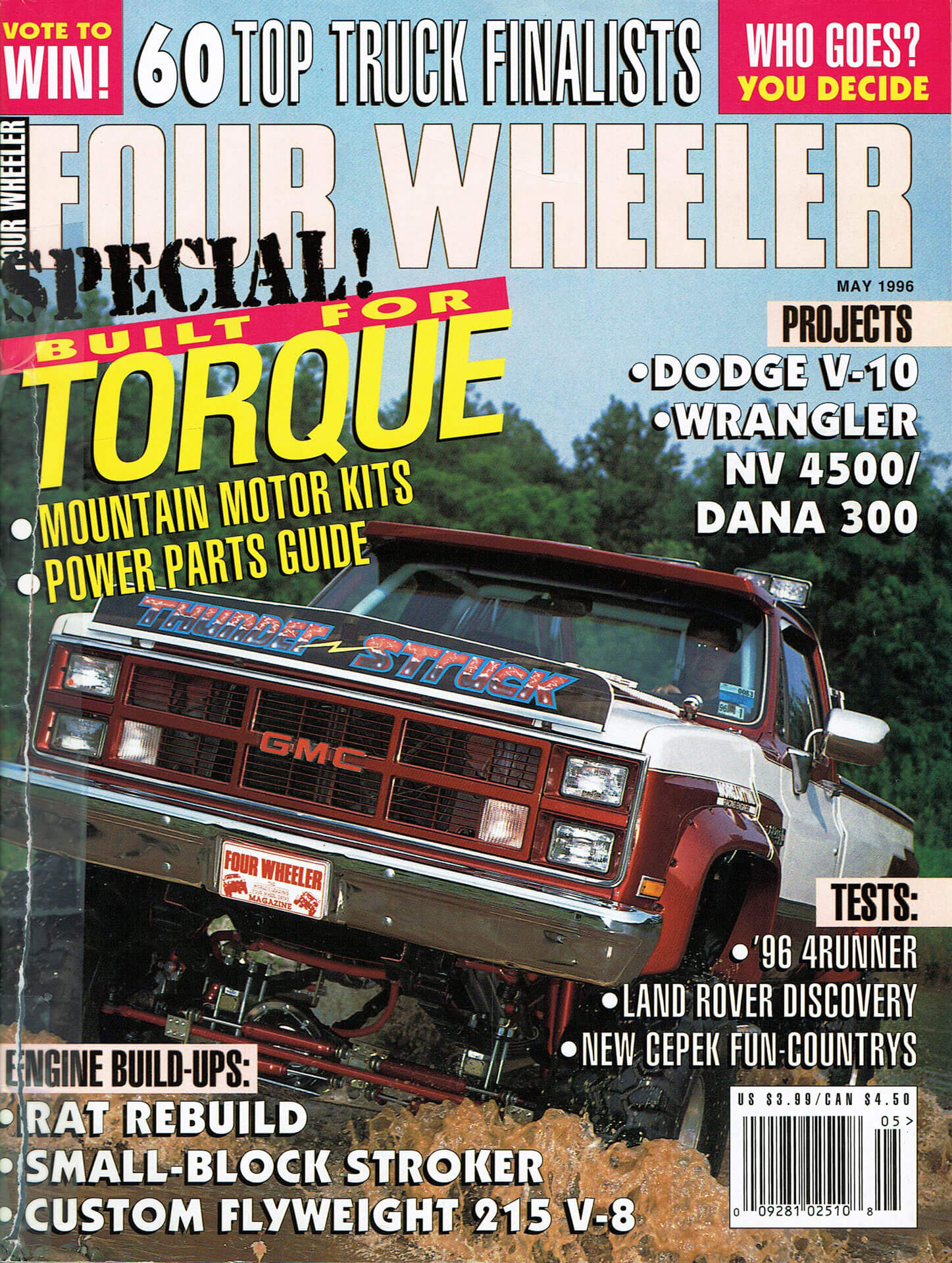
The Laforza was only built for two years beginning in 1989, as an international joint venture between Italian companies Iveco (commercial truck maker) and Pininfarina (body specialist responsible for many Ferrari an Alfa designs), along with Cars and Concepts in Brighton, Michigan. The Pininfarina body is stainless steel outfitted with a luxurious interior reminiscent of the original Range Rover or G-Wagon. This was then mounted to Pininfarina’s own boxed ladder frame and mated to Iveco axles (solid rear leaf springs, independent torsion bar front) and shipped to Michigan, where Cars and Concepts mounted a 5.0-liter, 185hp Ford truck motor, AOD tranny and NVG 249 transfer case. At 5,250 pounds, the Laforza was hardly a quarter mile champ, even with the 302 V-8. So when Southern California resident Sergio Hamernik bought his as a pieces and-parts project, he decided the motor was the one thing he would not keep stock. When he built his Laforza (some trucks were left as incomplete when the company went belly up), he decided to install an SVO 5.0 GT-40 motor and let renowned supercharger specialist Kenne Bell and tech wizard Brett Stach of Brett Stach’s Cal-Fab work a little magic. The GT-40 motor came with optional aluminum heads, 1.94 intake valves and 1.54 exhaust valves and SVO camshaft model E303, used to enhance low-rpm grunt. The Kenne Bell Whipplecharger sits atop the stock EFI system, which has been recalibrated and upgraded to 24-pound injectors and mounted to a GT-40 manifold. Exhaust fumes exit via JBA headers, Perfection cats and a Flowmaster exhaust utilizing 3- inch tubing. Getting a supercharger and motor to perform accurately together at max boost can be a tricky puzzle, but with the electronics available today, the puzzle can be solved. Upgrades for the blower include a Mercury Magnetics® voltage control module, Crane Hi-6 CD ignition and PS-92 coil. The voltage control module boosts the voltage going to the fuel pump to compensate for the leanness at full boost, eliminating any pinging or detonation. A J&S individual cylinder anti- knock control ignition was used to automatically advance or retard the spark for each cylinder. Deciding that he wanted the “sleeper” look, Sergio left the rest of the vehicle stock with the exception of Michelin 275/70 R16 tires, cross-drilled front rotors and a 3,200rpm stall converter for the AOD. The stout stock drivetrain includes 3.90:1 gears and factory rear posi, which Sergio says is up to handling the 240-plus peak rear-wheel horsepower and 330-plus lb.-ft. of rear-wheel torque. What’s most impressive about this vehicle is that the Supercharger’s boost curve is nearly flat throughout the rpm, making over seven pounds of boost from 2,100 to 3,800 rpm. This setup is ideal for the four wheeler because consistent boost makes this relatively small V-8 perform like a big-block. Laforzas are probably some of the rarest rigs running around and this on is even more unique because of the extensive motor modifications. But this motor setup doesn’t have to be unique, it will work well on any number of Ford trucks and could be an alternative to swapping in a big-block.